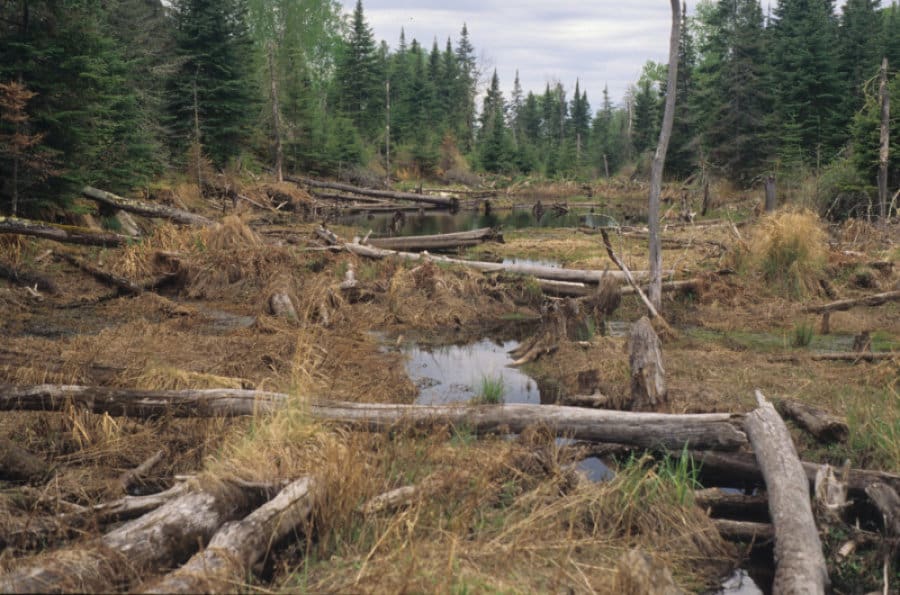
(Image courtesy of South Dakota State University)
A researcher who has been studying beavers in Voyageurs National Park for decades has collected her findings in a new book Beavers: Boreal Ecosystem Engineers. It describes how the aquatic animals have a significant impact on their homes in the boreal habitat, altering everything from water flows to the types of trees that grow.
Dr. Carol Johnston and colleagues have been working in Minnesota’s only National Park since the 1980s, measuring the number of beavers and how they affect the landscape. The scientists also used historic aerial photography to reconstruct the history of beaver occupation in the park going back decades before field research started.
In 2000, the beaver population in Voyageurs was estimated at 3,000, according to the National Park Service.
Before European immigration and the fur trade, which decimated their population, beavers were important forces on the northern landscape. By falling trees, building dams, and creating ponds, they had an impact on numerous aspects of Canada and northern Minnesota.
“The beaver, Castor canadensis, is an ecosystem engineer unequaled in its capacity to alter landscapes through browsing and dam building, whose population recovery has re-established environmental conditions that probably existed for millenia prior to its near extirpation by trapping in the 1800s and 1900s,” the book’s description reads.
Beavers began to return to the Kabetogama Peninsula in what is now Voyageurs National Park after a major fire in 1936. They are only today having similar impacts to what they once did.
Beavers’ role is so critical to a naturally-functioning boreal ecosystem because it is a “keystone species,” actually creating habitat for other plants and animals. Everything from ducks to frogs to moose use beaver-altered habitat.
“Having beaver on the landscape creates a lot of biodiversity,” Johnston told ScienceDaily in 2014.
The book is primarily intended for scientists and resource managers, available from Springer.

